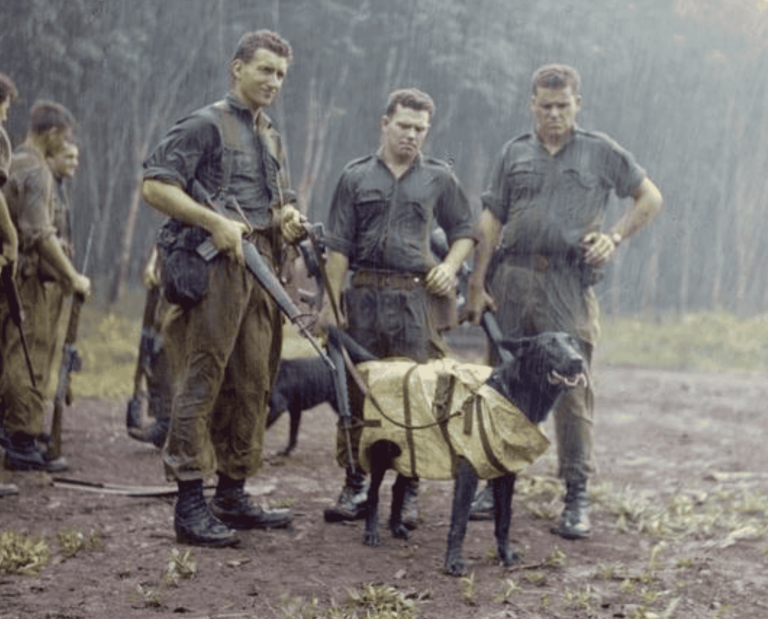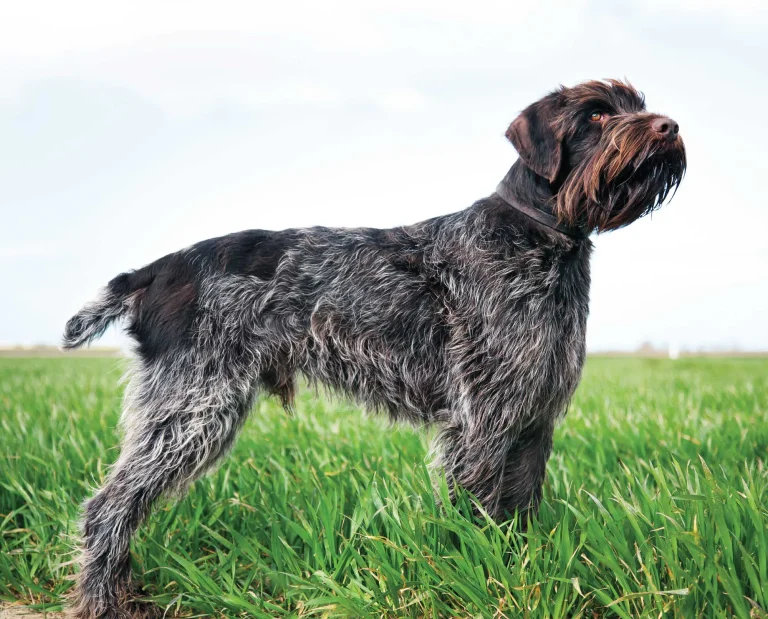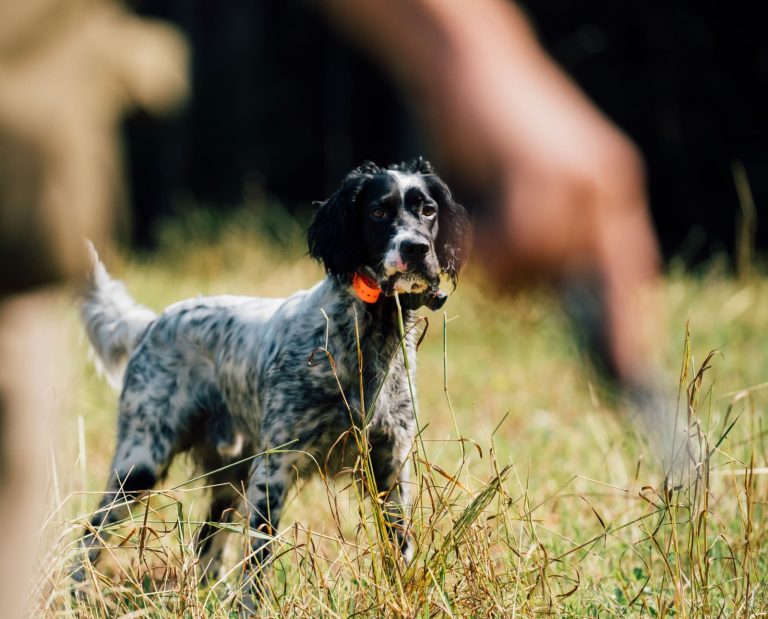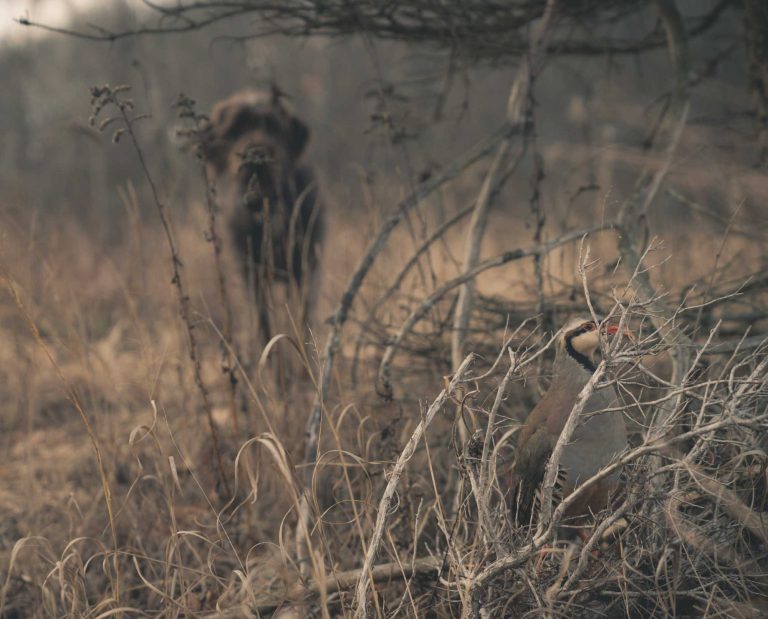Dental Disease Actually Effects a Dogs Ability to Smell

Ignore the old wives’ tales and learn the science behind dental disease and a dog’s ability to scent
When six-time Champion Hard Driving Bev started missing birds, professional trainer Joe McCarl attributed the changes to an aging dog starting to lose her senses. “She became really unsure around birds,” McCarl recalled. “This was a dog that always just stuck her birds and now she either wasn’t finding birds or was really unsure of where they were when on point.” While McCarl wasn’t going to turn back the hands of time, it was possible that Bev’s scenting loss was related to a very treatable condition — advanced dental disease.
Gun dog owners and handlers are a superstitious lot, and for all of the technology and advanced knowledge of canine health and behavior that we have been given over the years, a reliance on old wives’ tales and a mentality of “that’s how we’ve always done it” still exists. For years field trialers thought removing the tonsils on their favorite field trial dog would help increase scenting ability and performance in the field. When this procedure was looked at to determine how it worked, researchers discovered that at the time of the tonsillectomy most veterinarians were also cleaning the teeth. It was this teeth cleaning that was actually causing the increase in scenting ability, not the removal of the tonsils. Yet even with the research out there to show dental care can impact scenting, many dog owners are reluctant to spend the money to have their dog’s teeth cleaned.
For a better understanding of how dental disease can impact scenting ability, it is important to take a look at canine anatomy and how closely associated the teeth and sinuses are in relation to each other. The following picture shows a side profile of a setter with important structures drawn on the photo. To qualify the drawing: I am neither an artist nor an anatomist, so bear with me.
In the accompanying pictures, I’ve outlined in white where this setter’s teeth and roots lie, and in yellow where the sinus cavities are. For point of reference, the red line represents the gum line, and the blue area is the sinuses. It is easy to see that inflammation and infection of the teeth and surrounding tissues directly impacts the sinuses, the respiratory tissue, and the scenting ability due to the close proximity. With very severe dental disease, tracts can develop, forming an opening between the mouth and sinuses.

The attached CT image shows a severe example of this in an older pointer. Those foul-smelling, atrocious teeth are not just causing problems at the gum line – often the issues extend much deeper and can be incredibly painful.
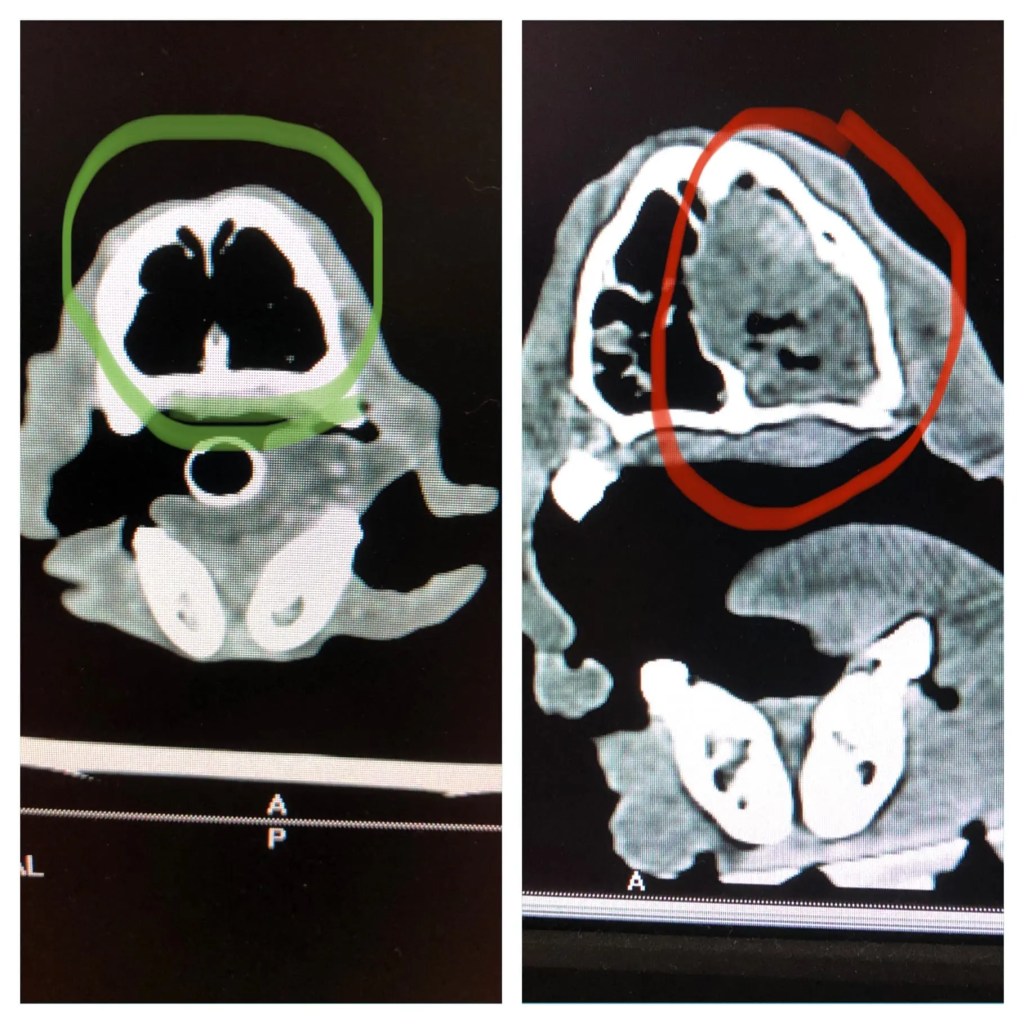
Now I can just about guarantee there will be skeptics who believe a veterinarian is writing an article on dental disease to drum up business and perform an unnecessary procedure. Too often we hear the argument that people don’t have to be put under for dental cleanings or that we have our teeth for over 80 years without the need for such aggressive measures so why is it so important for our dogs?
The thing to remember, especially with health issues, is that dogs are not little humans and their medical needs are different than ours. This includes their mouths. A dog’s mouth health serves as a gateway to the rest of the body, and with advanced dental issues we can see the effects on distant organs like the heart, liver and kidneys, in addition to the local problems it causes in the mouth and sinuses. With too many dogs, it isn’t just an issue of bad breath, but rather, a much deeper health concern.
The vast majority of sporting breed dogs will likely never require a dental in their lives. Dental disease is a highly variable condition from dog-to-dog and is more prevalent in our small and toy breeds. As with all health issues, though, it is important to treat and evaluate the individual dog and not make blanket statements in regards to health care. Many dogs will have staining and tartar buildup as they age, and with most this will not have a significant impact on their overall health. The most important criteria to evaluate with dental health is the gum line and surrounding tissue. Once there is evidence of gingivitis, it is time to consider a thorough cleaning in order to head off more severe problems. By the time this inflammation has started, there very likely has been an impact on scenting ability.
A big sticking point with many owners is that dogs have to be anesthetized in order for their teeth to be cleaned. Too often owners will want to chip the tartar off on their own or just have the teeth scaled; unfortunately, this can worsen issues. By the time there is evidence of dental disease and inflammation, oftentimes the issues have spread to below the gum line.
In order to perform a complete cleaning at tooth level and under the gum line, even the most tolerant dog will need to be put under anesthesia. As for just scaling or chipping off the tartar, this too is a bad idea, because it can create grooves or imperfections in the enamel, which will give the tartar-forming bacteria a foothold and can actually accelerate tartar buildup. It is vitally important to both clean the teeth and then to have them polished in order to ensure better dental health.
I strongly recommend to dog owners to take a hard look at the teeth and gums every six months, and more frequently if your dog has dental problems. I certainly don’t advocate across the board dentals for all dogs over a certain age, and some dogs will indeed go a lifetime without needing veterinary dental care. However, with that being said, it is also important to not pooh-pooh the need for a dental. In conjunction with your veterinarian, evaluate if your dog will benefit from a dental. This decision may lead to increased performance in the field and more importantly a longer healthier life.
One note on dental care and selection of a veterinarian to perform the procedure: while it may cost more, I would encourage you to find a small animal veterinarian with the appropriate anesthetic and dental equipment. Dentistry is an area that you can’t just compare prices due to the varying equipment and skills in this field. It is also important to understand if your veterinarian is able to take dental x-rays to evaluate below the gum line including the roots of the teeth. Tooth extraction can be a complicated surgical event which also means specialized equipment, which again not every veterinary clinic will have. I always encourage owners to ask questions and understand what and how things are being done to their dogs.
Once the dental is performed there are things that can be done to prevent or slow future tartar buildup and gingivitis. There are a number of dental chew products on the market, some impregnated with formulas to inhibit bacterial growth in the mouth. One important point is to look for products that carry the VOHC Accepted label. These are products that have been evaluated by the Veterinary Oral Health Council to verify that they do indeed slow plaque and tartar development. One such product that I use on my own dogs are Greenies Dental Treats; other options include oral gels, rinses, water additives, etc.
There are also foods designed to help with overall dental health. Eukanuba Adult dry dog foods have 3D DentaDefense which contain an anti-tartar agent, derived from naturally occurring minerals, which works during and after meals to prevent tartar buildup throughout the whole mouth. Eukanuba’s specially designed S-shaped kibble and crunchy texture along with an anti-tartar agent, helps break the plaque-to-tartar cycle, helping to promote dental health between checkups and cleanings.
The downside is that these treats and diets are not going to undo a dirty mouth with significant dental disease. They are only effective when used preventatively before a problem develops or after a dental cleaning has been performed.
So how did things turn out for McCarl and Bev? After performing poorly in the spring trials due to a lack of finds, McCarl had a dental performed on the Champion. “She almost immediately went back to sticking her birds,” he noted. “I couldn’t believe the difference and I kick myself for not having her teeth cleaned sooner.”
The next time you roll back your dog’s gums and reveal those foul-smelling, tartar-laden teeth don’t dismiss it as just teeth. Think of it as the gateway to your dog’s scenting ability and more importantly the major organ systems of the body. Ignoring dental health now can have dire consequences down the road.



